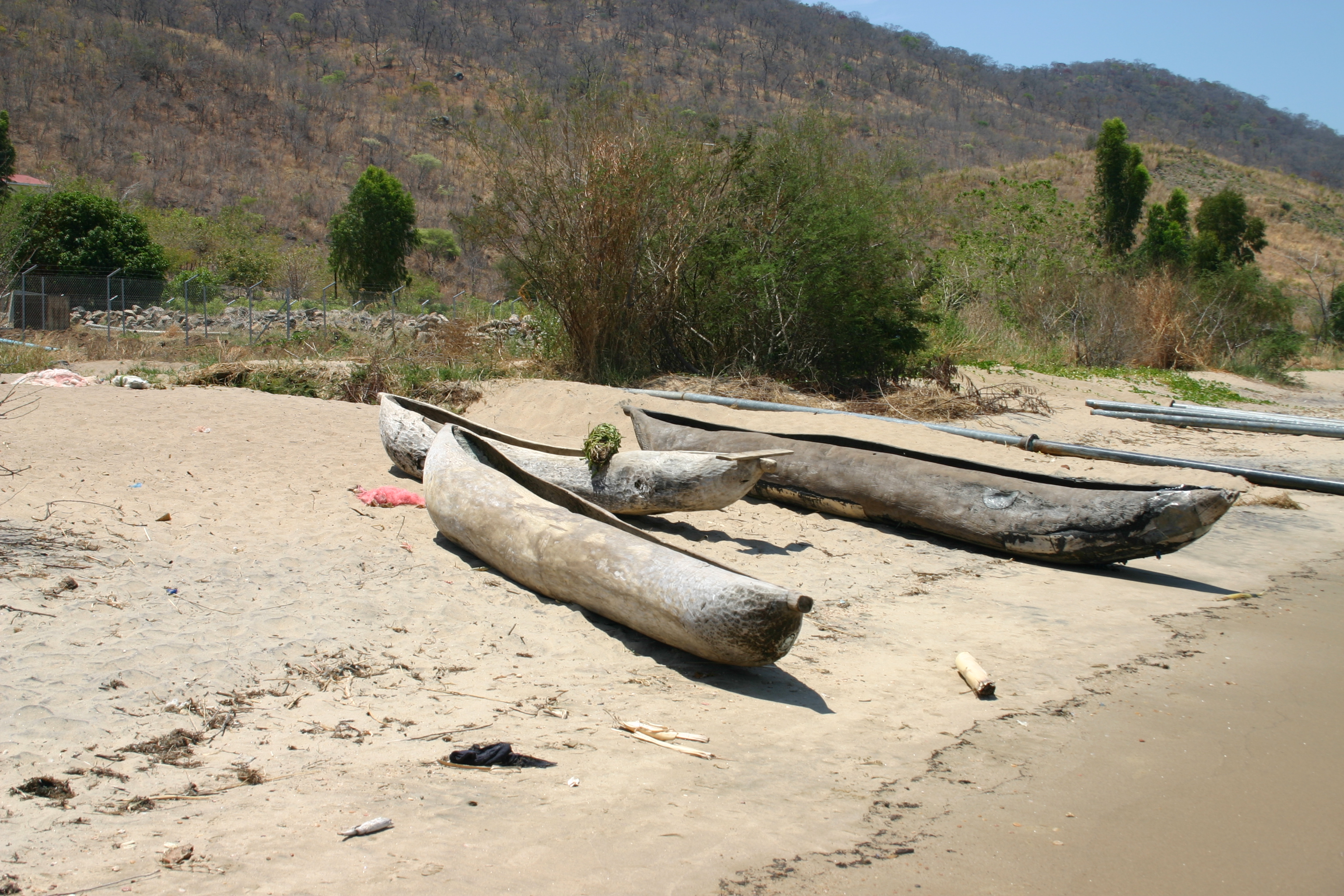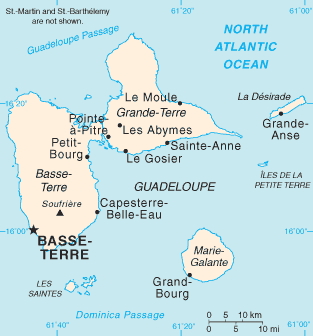|
Saintoise
The saintoise (; Antillean Creole: ''Sentwaz'') or ''canot saintois'' (literally: dinghy from les Saintes) is a fishing boat without a deck, traditionally maneuverable with the sail or the ream. It is native to the les Saintes archipelago where it spread throughout the Lesser Antilles. The saintoise is an integral part of the heritage and the cultural identity of the archipelago. The practice of using sailing saintoises developed quickly in Guadeloupean water sports since 2001 when it officially became a new sport, the traditional sailboat racing. Description The traditional saintoise is constructed from several types of wood to create the hull (spruce for the keel, mahogany for the edges and the floor, Tabebuia pallida for members and bow). Sails (foresail and mainsail) are linked to the mast and the boom (in bamboo) by lianas called ''ailes de ravèt'' (literally: cockroach wings). The boom is longer than the mast. The boat is ballasted by rocks and is navigated by a crew of at ... [...More Info...] [...Related Items...] OR: [Wikipedia] [Google] [Baidu] |
Îles Des Saintes
The Îles des Saintes (; "Islands of the Female Saints"), also known as Les Saintes, is a group of small islands in the archipelago of Guadeloupe, an overseas department of France. It is part of the Canton of Trois-Rivières and is divided into two communes: Terre-de-Haut and Terre-de-Bas. It is in the arrondissement of Basse-Terre and also in Guadeloupe's 4th constituency. History Pre-Columbian ''Les Saintes'', due to their location in the heart of the Lesser Antilles, were frequented first by Indian tribes coming from Caribbean and Central America. ''Caaroucaëra'' (the Arawak name of ''Îles des Saintes''), although uninhabited due to the lack of spring water, were regularly visited by Arawak peoples then Kalinagos living on the neighbourhood islands of Guadeloupe and Dominica around the 9th century. They went there to practise hunting and fishing. The archaeological remains of war axes and pottery dug up on the site of ''Anse Rodrigue's Beach'' and stored at "Fort Nap ... [...More Info...] [...Related Items...] OR: [Wikipedia] [Google] [Baidu] |
Antillean Creole
Antillean Creole (Antillean French Creole, Kreyol, Kwéyòl, Patois) is a French-based creole that is primarily spoken in the Lesser Antilles. Its grammar and vocabulary include elements of Carib, English, and African languages. Antillean Creole is related to Haitian Creole but has a number of distinctive features. Antillean Creole is spoken natively, to varying degrees, in Dominica, Grenada, Guadeloupe, Îles des Saintes, Martinique, Saint-Barthélemy (St. Barts), Saint Lucia, French Guiana, Trinidad and Tobago, and Venezuela (mainly in Macuro, Güiria and El Callao Municipality). It is also spoken in various Creole-speaking immigrant communities in the United States Virgin Islands, British Virgin Islands, and the Collectivity of Saint Martin. Antillean Creole has approximately 1 million speakers and is a means of communication for migrant populations traveling between neighbouring English- and French-speaking territories. In a number of countries (including Dominica, Grena ... [...More Info...] [...Related Items...] OR: [Wikipedia] [Google] [Baidu] |
Trapeze
A trapeze is a short horizontal bar hung by ropes or metal straps from a ceiling support. It is an aerial apparatus commonly found in circus performances. Trapeze acts may be static, spinning (rigged from a single point), swinging or flying, and may be performed solo, double, triple or as a group act. The name of the apparatus reflects the trapezoid shape made by the horizontal bar, ropes and ceiling support. History The art of trapeze performance is reported to have been developed by Jules Léotard, a young French acrobat and aerialist, in Toulouse in the mid-1800s. He is said to have used his father's swimming pool to practice. However, the name "trapeze" can be found in books dating as far back as twenty years earlier, before Léotard was born. One such example is George Roland’s “An Introductory Course of Modern Gymnastic Exercises”, published in 1832. Roland proposes the idea that the trapeze might owe its origin to Colonel Amoros, but ultimately deems the question o ... [...More Info...] [...Related Items...] OR: [Wikipedia] [Google] [Baidu] |
Regatta
Boat racing is a sport in which boats, or other types of watercraft, race on water. Boat racing powered by oars is recorded as having occurred in ancient Egypt, and it is likely that people have engaged in races involving boats and other water-borne craft for as long as such watercraft have existed. A regatta is a series of boat races. The term comes from the Venetian language, with ''regata'' meaning "contest" and typically describes racing events of rowed or sailed water craft, although some powerboat race series are also called regattas. A regatta often includes social and promotional activities which surround the racing event, and except in the case of boat type (or "class") championships, is usually named for the town or venue where the event takes place. Although regattas are typically amateur competitions, they are usually formally structured events, with comprehensive rules describing the schedule and procedures of the event. Regattas may be organized as champions ... [...More Info...] [...Related Items...] OR: [Wikipedia] [Google] [Baidu] |
Dugout (boat)
A dugout canoe or simply dugout is a boat made from a hollowed tree. Other names for this type of boat are logboat and monoxylon. ''Monoxylon'' (''μονόξυλον'') (pl: ''monoxyla'') is Greek – ''mono-'' (single) + '' ξύλον xylon'' (tree) – and is mostly used in classic Greek texts. In German, they are called Einbaum ("one tree" in English). Some, but not all, pirogues are also constructed in this manner. Dugouts are the oldest boat type archaeologists have found, dating back about 8,000 years to the Neolithic Stone Age. This is probably because they are made of massive pieces of wood, which tend to preserve better than others, such as bark canoes. Along with bark canoes and hide kayaks, dugouts were also used by Indigenous peoples of the Americas. Construction Construction of a dugout begins with the selection of a log of suitable dimensions. Sufficient wood must be removed to make the vessel relatively light in weight and buoyant, yet still strong enough to su ... [...More Info...] [...Related Items...] OR: [Wikipedia] [Google] [Baidu] |
Saint Martin (island)
Saint Martin (french: Saint-Martin; nl, Sint Maarten) is an island in the northeast Caribbean Sea, approximately east of Puerto Rico. The island is divided roughly 60:40 between the French Republic () and the Kingdom of the Netherlands (), but the Dutch part is more populated than the French part. The division dates to 1648. The northern French part comprises the Collectivity of Saint Martin and is an overseas collectivity of the French Republic. As part of France, the French part of the island is also part of the European Union. The southern Dutch part comprises Sint Maarten and is one of four constituent countries that form the Kingdom of the Netherlands. On January 1, 2019, the population of the whole island was 73,777 inhabitants, with 41,177 living on the Dutch side and 32,489 on the French side. Note that the figure for the French side is based on censuses that took place after the devastation of Hurricane Irma in September 2017, whereas the figure for the Dutch side is o ... [...More Info...] [...Related Items...] OR: [Wikipedia] [Google] [Baidu] |
Marie Galante
Marie-Galante ( gcf, label=Antillean Creole, Mawigalant) is one of the islands that form Guadeloupe, an overseas department of France. Marie-Galante has a land area of . It had 11,528 inhabitants at the start of 2013, but by the start of 2018 the total was officially estimated to be 10,655, with a population density of . Administration Marie-Galante is divided into three communes (with populations at 1 January 2013): * Grand-Bourg (5,564 residents), * Capesterre-de-Marie-Galante (3,389) and * Saint-Louis (2,575). These three communes formed an intercommunal entity in 1994: the Community of Communes of Marie-Galante (french: communauté de communes de Marie-Galante). This is the oldest intercommunal structure of the overseas regions of France. History The Huecoids are the oldest known civilizations to have occupied Marie-Galante, followed by Arawaks, and then by the Island Caribs circa 850. The island was called ''Aichi'' by the Caribs and ''Touloukaera'' by the Arawaks. ... [...More Info...] [...Related Items...] OR: [Wikipedia] [Google] [Baidu] |
La Désirade
La Désirade is an island in the French West Indies, in the Lesser Antilles of the Caribbean. It forms part of Guadeloupe, an overseas region of France. History Archaeological evidence has been discovered that suggests that an Amerindian population lived on La Désirade from the 3rd to the 16th centuries. Spanish colonization Deseada was the first island sighted by Christopher Columbus in 1493. When he landed there during his second voyage to America, he took possession of the island on behalf of the Spanish crown, followed by the island of Marie-Galante. Like other Antillean islands, it served as a hideout for pirates or corsairs who attacked Spanish overseas possessions. Some sources indicate that the island owes its name to the relief of the members of Columbus crew who saw the first dry land since leaving the Canary Islands of Spain. They cried out: "Oh, desired island" The French name ''La Désirade'' is an adaptation of its historical name in Spanish (''La Deseada'') ... [...More Info...] [...Related Items...] OR: [Wikipedia] [Google] [Baidu] |
Martinique
Martinique ( , ; gcf, label=Martinican Creole, Matinik or ; Kalinago: or ) is an island and an overseas department/region and single territorial collectivity of France. An integral part of the French Republic, Martinique is located in the Lesser Antilles of the West Indies in the eastern Caribbean Sea. It has a land area of and a population of 364,508 inhabitants as of January 2019.Populations légales 2019: 972 Martinique INSEE One of the , it is directly north of Saint Lucia, northwest of |
Dominica
Dominica ( or ; Kalinago: ; french: Dominique; Dominican Creole French: ), officially the Commonwealth of Dominica, is an island country in the Caribbean. The capital, Roseau, is located on the western side of the island. It is geographically situated as part of the Windward Islands chain in the Lesser Antilles archipelago in the Caribbean Sea. Dominica's closest neighbours are two constituent territories of the European Union, the overseas departments of France, Guadeloupe to the northwest and Martinique to the south-southeast. Dominica comprises a land area of , and the highest point is Morne Diablotins, at in elevation. The population was 71,293 at the 2011 census. The island was settled by the Arawak arriving from South America in the fifth century. The Kalinago displaced the Arawak by the 15th century. Columbus is said to have passed the island on Sunday, 3 November 1493. It was later colonised by Europeans, predominantly by the French from the 1690s to 1763. The Frenc ... [...More Info...] [...Related Items...] OR: [Wikipedia] [Google] [Baidu] |

.jpg)




